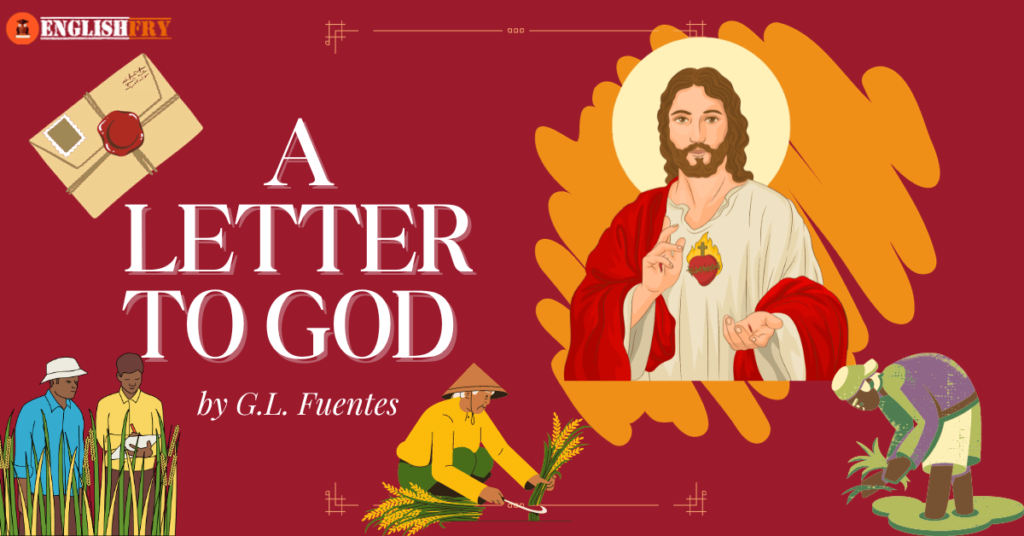Table of Contents
ToggleContext
A Thing of Beauty is a poem composed by John Keats, a prominent romantic poet. The poem describes how nature and its wonder enchant us and wash away all the misery that we encounter from time to time. This is an excerpt from John Keats’ poem “Endymion.” The poem is based on a famous Greek tale about the Moon Goddess Cynthia’s love for a young shepherd prince named Endymion. His poetry employs metaphor to represent the human soul’s search for ideal Beauty. (Allegory is a demonstrative kind of representation that explains meaning other than the words expressed. Allegory conveys a message through symbolic figures, activities, or symbolic representation.)
Endymion stands for the poet as a man, Cynthia for ideal Beauty, the Moon for the manifestations of the Beauty in Nature.
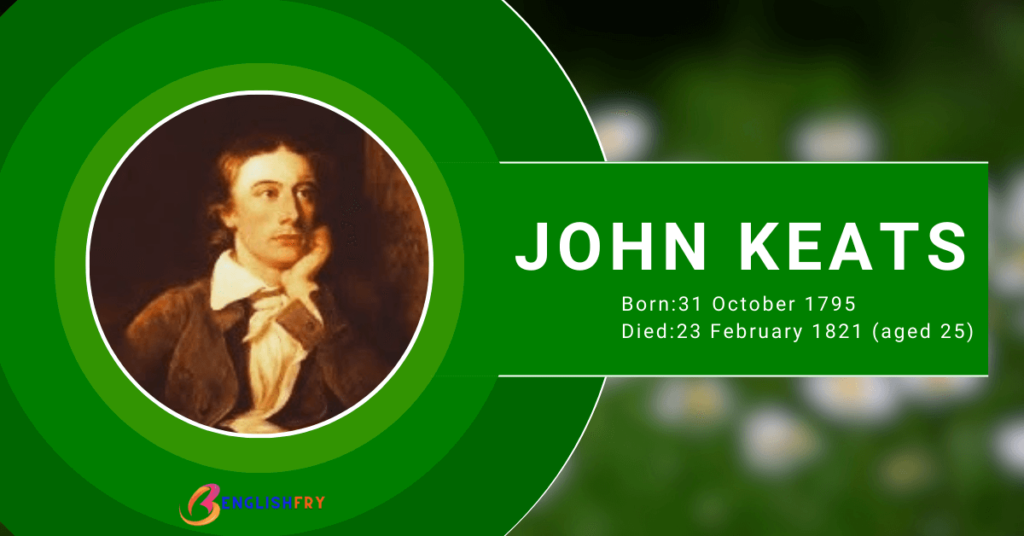
About John Keats
One of England’s greatest poets was John Keats. On October 31, 1795, he was born in London. Thomas Keats, his father, was an innkeeper. His mother’s name was Frances. They have five children. John Keats enrolled at Clarke’s School in Enfield in 1803.
However, tragedy struck in 1804 when his father was murdered after falling off a horse. His mother remarried quickly. However, she quickly divorced her second spouse. After that, John Keats moved in with his grandma. By 1809, John had reunited with his mother, but she was unwell. She passed away in 1810.
John dropped out of school in 1810 and became an apprentice to an Edmonton surgeon and pharmacy in 1811. As a teenager, Keats got extremely fascinated to poetry and when he was approximately 18 he composed his first poem, one named ‘Imitation of Spenser’.In 1815, John enrolled in Guy’s Hospital in London. He did, however, continue to create poems. In 1816, he got his first poem published in a magazine named The Examiner. ‘O Solitude!’ was the title of a sonnet. Keats also passed his exams in 1816. He then published a book named ‘Poems’ in 1817. However, it was a flop, receiving little attention.
Nevertheless, Keats continued writing. His epic poem Endymion was published in 1818. During 1818-1819 Keats continued to write great poems including ‘Ode to a Nightingale’, ‘Hyperion’, ‘The Eve of St Agnes’, and ‘Ode to Autumn’.
However, in 1820 Keats fell ill with tuberculosis. He went to Italy in the hope that the climate might help. Nevertheless, John Keats died in Rome on 23 February 1821. He was only 25. Keats was buried in the Protestant cemetery.
Theme
The initial line of the poem contains the poem’s theme. A beautiful object is remembered because it brings us permanent and everlasting joy. This happiness never fades away, but increases exponentially everytime it flashes through our minds.
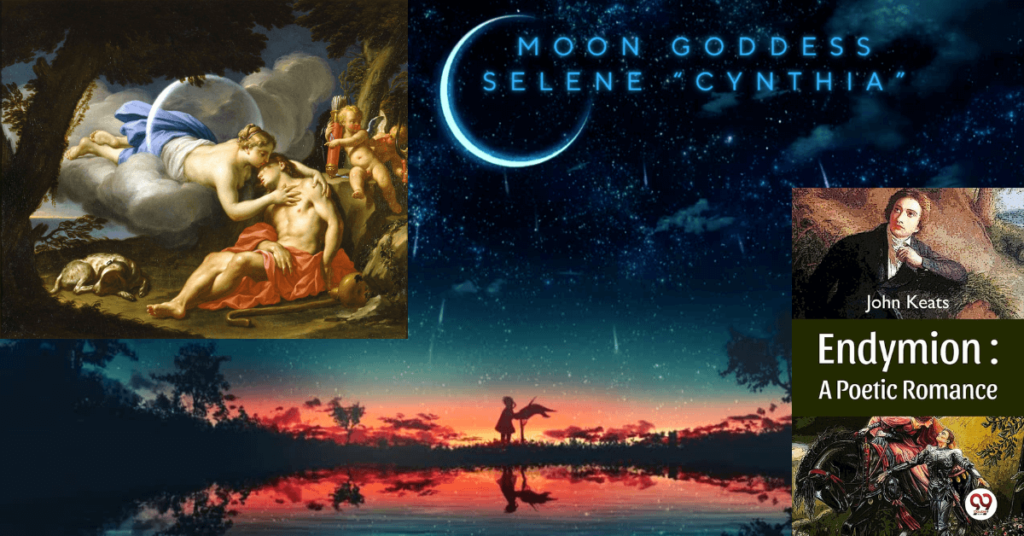
Background
Endymion is an epic poem in English. This poem by Keats is based on the Greek mythology of Endymion, the shepherd beloved by the moon goddess
Selene. We see an elaboration of the original story and the moon Goddess Selene is named as “Cynthia”. The poem equates Endymion‟s original romantic ardor with a more universal quest for a self-destroying transcendence in which he might achieve a blissful personal unity with all creation.
Endymios in Greek mythology is a story of a handsome youth who spent much of his life sleeping. There are different views related to Endymion. According to some tradition Endymion was the king of Elis.
Several traditions say that he was offered by Zeus to choose anything he might desire and Endymion in order to remain young forever chose an everlasting sleep. While some tradition says Endymion‟s eternal sleep was a punishment given by Zeus, because Endymion fell in love with Zeus‟s wife Hera. Selene was deeply in love with Endymion, some say Selene had cursed Endymion into everlasting sleep so that she can enjoy him all by herself.
Selene‟s love for Endymion made her visit him every night while he was asleep. But in the poem Keats emphasizes on Endymion‟s love for Diana rather than on hers for him. Keats transformed this tale into prose to express the loves that have been felt on imaginative longings. This theme of love is determined in the adventure of the Endymion quest by Diana.
In the search for Diana, Endymion falls in love with an earthly maiden. But in the end Diana and the earthly maiden turn out to be one and the same.
A Thing of Beauty Explanation
A thing of beauty is a joy forever
Its loveliness increases, it will never
Pass into nothingness; but will keep
A bower quiet for us, and a sleep
Full of sweet dreams, and health, and quiet breathing.
The poet says that beauty stays forever. It never fades away. Rather, it increases with the passing time. The perception/view of the poet regarding beauty is that it never goes off with the passing time, rather it beautifies more and more. For the poet, beauty is like a beautiful shady tree under whose shade all the creatures can sleep peacefully and enjoy good health.
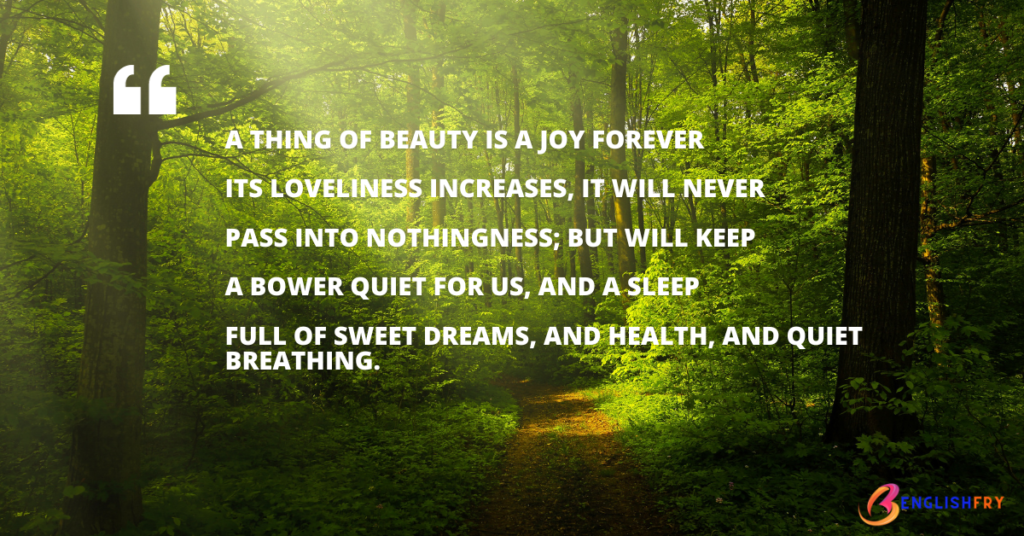
Literary devices:
- Rhyme scheme: aabbc (forever, never, keep, sleep, breathing)
- Alliteration: Use of consonant sound at the start of two words which are close in series (Sleep-Sweet)
- Metaphor: bower Quiet (calmness of the bower is compared to the calming effect of a beautiful thing)
Therefore, on every morrow, are we wreathing?
A flowery band to bind us to the earth,
Spite of despondence, of the inhuman dearth
Of noble natures, of the gloomy days,
Of all the unhealthy and o’er-darkened ways
Made for our searching: yes, in spite of all,
Some shape of beauty moves away the pall
From our dark spirits.
The poet says that every day, it is the beauty which fills us with the spirit to live. It is the beauty which builds the desire in us to live though there are sad moments and cruel people around us. So here the poet wants to say that without beauty the earth will be full of cruel people, sad and gloomy moments. It is the beauty which is created by god which helps us to remove the sadness from our hearts.
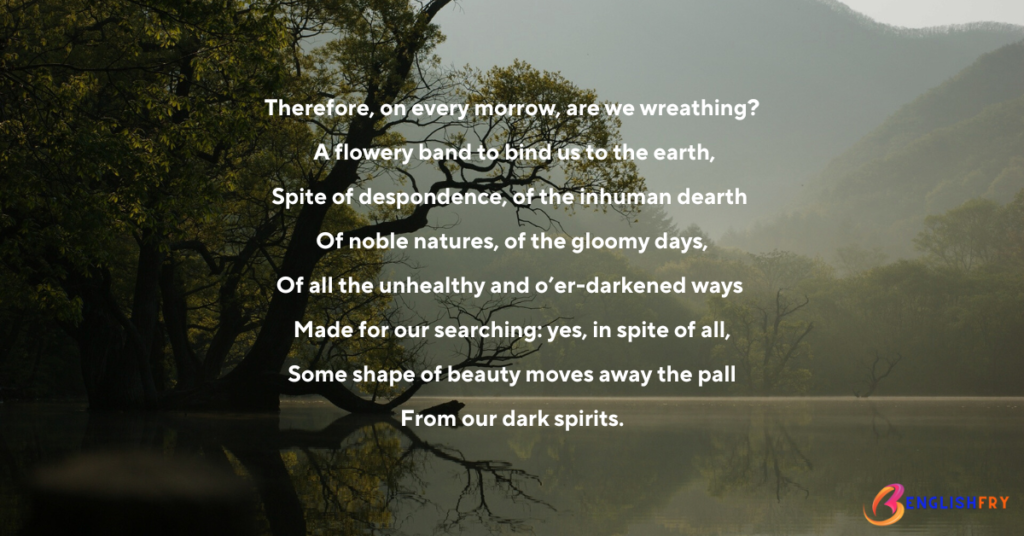
Word Meanings:
- Morrow: The following day
- Wreathing: surround, encircle
- Despondence: depressed
- Gloomy: sad
- Anaphora: Use of same word in two consecutive lines (of noble natures- Of all the unhealthy
Literary devices:
- Alliteration: Use of consonant sound at the start of two words which are close in series (‘b’ in Band Bind, ‘n’ in Noble nature, ‘s’ in some shape).
- Metaphor: wreathing a flowery band (the beautiful things of our life bind us to the earth)
- Imagery: creating a sensory effect of beautiful things lined up in a string (A flowery band to bind us)
- Inversion: normal order of words is reversed ( Are we wreathing a flowery band)
Such the sun, the moon,
Trees old, and young, sprouting a shady boon
For simple sheep; and such are daffodils
With the green world they live in; and clear rills
That for themselves a cooling covert make
‘Giants the hot season; the mid forest brake
Here the poet describes the beautiful things which are present on earth. These are the sun, moon, trees, flowers (daffodils) and the rivers. Poet says that all these things are like a blessing bestowed on all the creatures by earth. He further describes that the trees provide us with their shade, flowers with their beauty and rivers with their coolness during the hot summers. All of these are the beauties of nature which are like a boon for us.
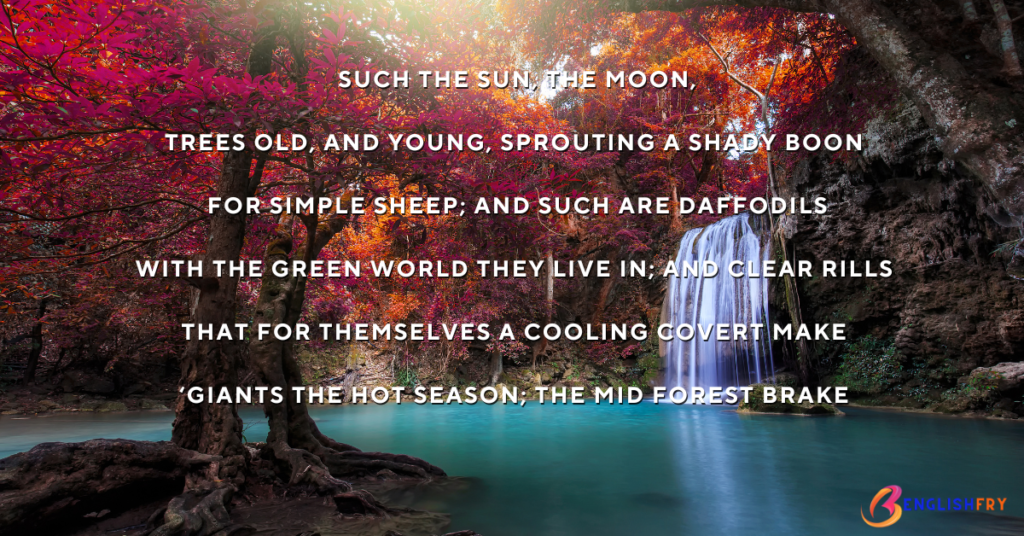
Word Meanings:
- Boon: blessing
- Rills: a small stream
- Brake: a process to slow down
Literary devices:
- Alliteration: Use of consonant sound at the start of two words which are close in series (‘s’ in Sprouting Shady, Simple sheep, ‘c’ in cooling covert)
- Imagery: Trees giving shade (sprouting shady boon), growing process of daffodils (daffodils with the green world they live in), and clean river streams (Clear rills)
- Antithesis: opposite words placed together (old and young)
Rich with a sprinkling of fair musk-rose blooms;
And such too is the grandeur of the dooms
We have imagined for the mighty dead; All lovely
tales that we have heard or read; An endless
fountain of immortal drink, Pouring unto us from
the heaven’s brink
The poet further carries on with the description of the more beautiful things present on earth. such as the beautiful musk roses which have such a nice fragrance. Then he describes the tales of the mighty warriors who laid their lives for their countries or for humanity. He says that these beautiful things are the gifts from god for all of us. They are like nectar given by god to us and these are those beauties which are immortal and give us a reason to live on this earth despite having so many sorrows in our life.
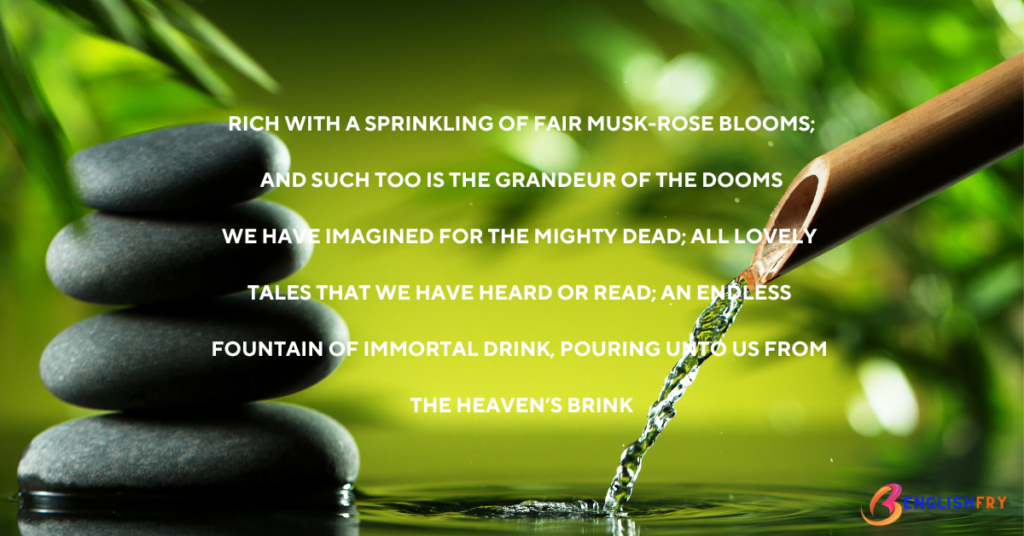
Word Meanings:
- Grandeur: high rank or socially important
- Mighty: enormous
- Immortal: never dying
- Brink: edge
Literary devices:
- Alliteration: Use of consonant sound at the start of two words which are close in series (‘h’ in have heard)
- Metaphor: Immortal drinks (beautiful objects of nature are forever like a never ending portion of a drink)
- Rhyme: Rhyme scheme is used in every stanza of the poem (forever; never, keep; sleep, dead; read etc.)
- Imagery: Bushes full of musk roses (sprinkling of fair musk rose blooms), books describing valour of fighters (grandeur-..Mighty dead), god providing us with best things (pouring from the heaven’s brink)
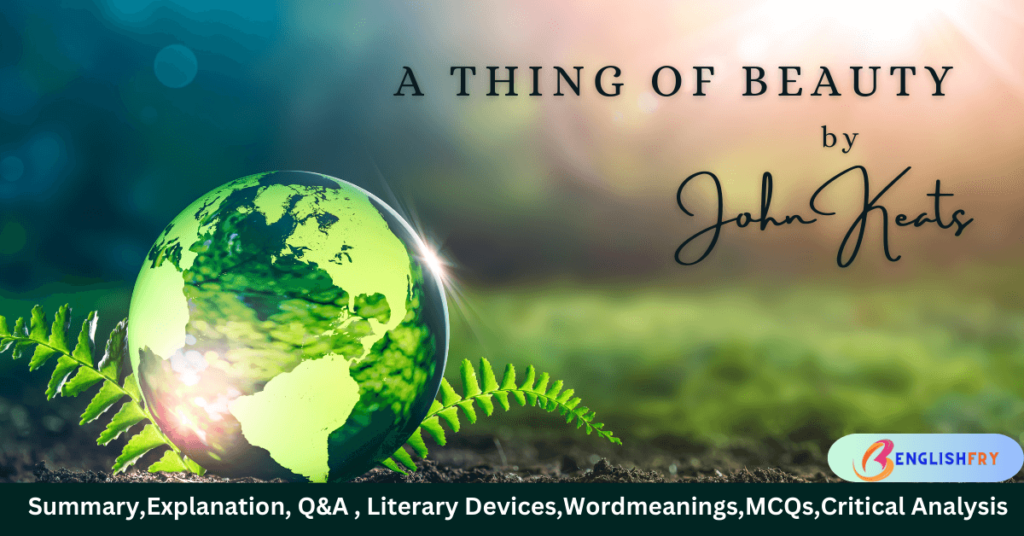
A Thing of Beauty Summary
A beautiful thing brings permanent joy since its attractiveness improves with the passage of time and its impact never fades. It’s as relaxing as a cold, peaceful bower, or a good night’s sleep with nice dreams, or good health and mental tranquility. It offers the beholder a haven of peace and comfort.
The beauty of nature is what keeps us connected to this planet. Every morning, we select beautiful fresh flowers and make garlands. Our passion with flowers represents our connection to the planet. It prevents us from becoming depressed or disappointed. We forget our misery, our acute scarcity of good spirits, and the disasters that befall us to put our patience to the test.
Life is full of trials and tribulations and we often find ourselves in the midst of gloom. It is at such depressing moments that a sight full of beauty dispels the pall of sadness from our spirits making room for hope and optimism.
The objects of beauty are countless. These include heavenly bodies like the sun and the moon, the old and young trees that provide cool shelter to sleep, the daffodil flowers encased in green leaves, the streams that flow through a shady passage which they make themselves with plants, and the bushes that bear fragrant flowers.
These simple and even commonplace things lift the human spirit filling it with joy and delight. In addition to these objects of nature, there are wonderful tales of our legendary heroes, who lived and died heroically, which inspire us with their matchless beauty. These beautiful things are metaphorically an endless source of nectar that pours down to us from hea ven
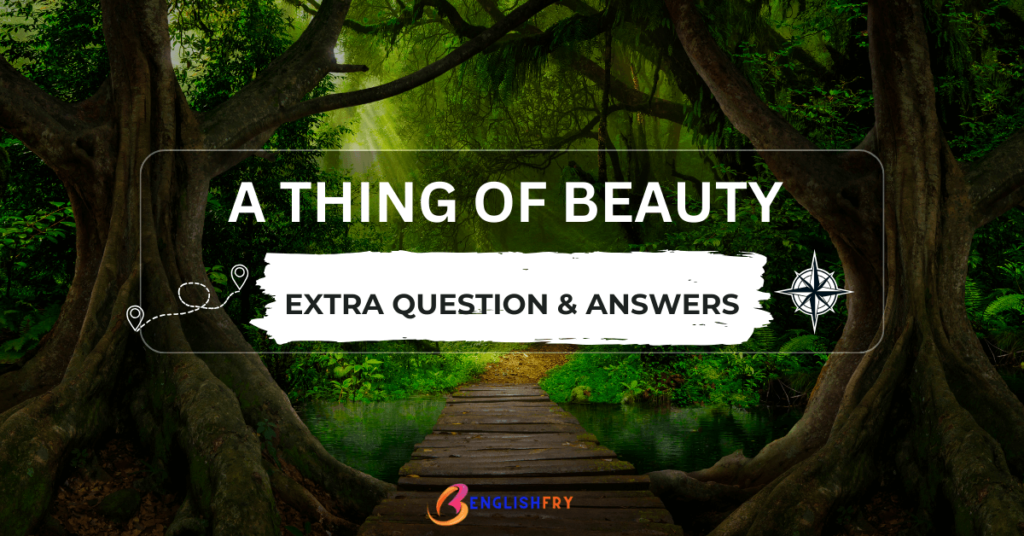
A thing of beauty Short Answer Questions
(Q1.) List the things of beauty mentioned in the poem.
(Ans): The things of beauty are the sun, the moon, old and new trees, daffodils, clear rills, musk roses that bloom among the thick forest ferns.
(Q2.) List the things that cause suffering and pain.
(Ans)The things that cause suffering are dark phases of our life, adverse circumstances, gloomy days, death of noble people and bad health.
(Q3.) What does the line ‘Therefore are we wreathing a flowery band to bind us to earth’ suggest?
(Ans)As a result of all the beautiful things around us, every morning we are weaving a flowery wreath to bind us to the beauties of the earth despite all the sadness.
(Q4.) What makes human beings love life in spite of all troubles?
(Ans)In spite of all the sufferings, a beautiful thing helps us to remove the cover of gloom or darkness from our lives.
(Q5.) Why is grandeur associated with the ‘mighty dead’?
(Ans)Grandeur is associated with the „mighty dead‟ because they will always be remembered for their noble and splendid deeds and creations. They have left behind a legacy for us to enjoy.
(Q6.) Do we experience things of beauty only for a short time?
(Ans) No, these things of beauty have lasting impression on us. It never passes into nothingness.
(Q7.) What image does the poet use to describe the beautiful bounty of the earth?
(Ans) The poet draws out the image of „an endless fountain of immortal drink‟ that poursjoy on us from the brink of heaven. These are the beautiful things in nature or man- made objects that he calls immortal drink‟.
(Q8.) How does a thing of beauty provide us shelter and comfort?
(Ans) John Keats is a great Romantic poet. He creates images that soothe our senses. Nature bestows us with things of rare beauty. It keeps the shade of trees ready for us to be comfortable and peaceful in it. Beautiful things also provide peace and security so that we can enjoy sound sleep. We are able to enjoy sweet dreams, good health because of them.
(Q9.) What spreads the pall of despondence over our dark spirits? How is it removed?
(Ans) Man makes his life miserable and full of suffering because of his own actions. The pall of despondence is the sadness that is a result ofone‟s own actions. A thing of beauty works wonders for man and removes the cover of gloom from his dampened spirits.
(Q10.) What is the message of the poem ‘A Thing of Beauty’?
(Ans) Keats, an ardent lover of nature, in his poem refers to the powers of nature. He urges mankind to realise these powers and make his life enjoyable and worth living. He tells us how a thing of beauty provides perennial joy to us.
(Q11.) How do the ‘daffodils’ and ‘clear rills’ enrich our environment?
(Ans) Daffodils are lovely white flowers that bloom in green surroundings. The „clear rills‟ or clear streams of water create cooling comfort or passage for themselves as they pass through the thick bushes and ward away the heat of the sun.
(Q12.) What is the ‘grandeur of the dooms’ and ‘endless fountain of immortal drink’?
(Ans) The „grandeur of the dooms‟ is a reference to our mighty and dead ancestors who have created beautiful objects for us. On the other hand, the „endless fountain‟ is the everlasting joy provided to us by the bounties of nature in the form of nectar pouring on us from heaven.
(Q13.) What makes human beings love life in spite of all troubles and sufferings?
(Ans)Human beings love life because nature is the best healer and brings beauty and joy to our life. The memory of beautiful experiences helps us to bear our sorrows.
(Q14.) How is a thing of beauty a joy for ever?
A thing of beauty is a source of constant joy. Its beauty goes on increasing and it will never pass into nothingness.
(Q15.) What kind of sleep does it provide ?
It provides a sound sleep, full of sweet dreams, health and peaceful breathing.
(Q16.) What are we doing every day ?
We are weaving a flowery wreath to bind us to the beauties of this earth.
(Q17.) Describe bad and evil things that we possess in us.
We suffer from disappointment, lack of noble qualities and unhealthy and evil ways.
(Q18.) What removes the pall from our dark spirits and how ?
Some beautiful shape or a thing of beauty removes the pall of sadness from our ” hearts or spirits.
(Q19.) What sprouts a shady boon for sheep and how ?
Trees old and young sprout to make a green covering. It becomes a shelter for simple sheep and proves a blessing for them.
(Q20.) Describe the role of daffodils and clear rills in enriching the environment.
Daffodils bloom among the green surroundings. The small streams (rills) with clear water make a cooling shelter for themselves against the hot season.
(Q21.) What is lovelier than all lovely tales we have heard or read ?
The beauty of daffodils, rills and musk-roses is more enchanting than all lovely stories that we have heard or read.
(Q22.) What is the source of ‘the endless fountain of immortal drink’ ?
An endless fountain of nectar that makes us immortal pours into us the heavenly bliss of nature.
(Q23.) What is the effect of that ‘immortal drink’ on us ?
That immortal drink that nature’s endless fountain pours into our hearts is a source of immense joy for us.

A thing of beauty Question and Answers
Q1.What does the line, ‘Therefore are we wreathing a flowery band to bind us to earth’, suggest to you ? (Imp.)
(Ans):Keats was a sensual poet. He is deeply attracted to the earth’s inexhaustible beauty. Man’s relationship with nature is unbreakable. gorgeous things are like garlands of gorgeous flowers. We appear to be wrapped in a flowery band that binds us to the earth’s beauty.
Q2.What makes human beings love life in spite of troubles and sufferings ? (Imp.)
(Ans):Many factors cause problems and pain. They lower our spirits. Despite these harsh circumstances,’some shape of beauty’ brings love and happiness. A beautiful thing lifts the cloud of grief and suffering from our life. It makes people fall in love.
Q3.Why is ‘grandeur’ associated with the ‘mighty dead’ ? (Imp.)
(Ans): The mighty dead were persons who were powerful and dominant in their own eras. Their accomplishments made them’mighty’ and great. Their creations enchant our sight. We believe that such strong deceased progenitors will be magnified at the end of time. They will be compensated. As a result, the’mighty dead’ are connected with grandeur.
Q4.Do we experience things of beauty only for short moments or do they make a lasting impression on us ? (Imp.) .
(Ans): In the first sentence of this extract, John Keats states unequivocally that “a thing of beauty is a joy forever.” It is a permanent source of happiness. Its beauty does not deteriorate. Its beauty grows with each passing second. Its worth has not lessened. It never vanishes into oblivion. It always lifts the shroud of despair that has settled over our disappointing spirits.
Q5.What image does the poet use to describe the beautiful bounty of the earth ?
(Ans):John Keats used a variety of pictures to illustrate the earth’s lovely richness. The earth’s wealth is like an endless spring. This never-ending spring of immortal liquid pours from heaven into our hearts.
Q6 :What pleasure does a beautiful thing give us? Are beautiful things worth treasuring?
(Ans):The world is filled with negative elements which make our life dull, sad, depressing and bereft of hope. In such moments, a beautiful thing gives us everlasting joy and helps us forget our sorrows. Yes, a beautiful thing is worth treasuring because even its memory soothes our nerves and inspires us to overcome the challenges of life.
Q7 :List the things of beauty mentioned in the poem.
(Ans):According to the poet, there are numerous things of beauty that help us forget our sorrows. These are the sun, the moon, old and young trees that provide shade to ‘simple sheep’, daffodils, clear streams of rivers, musk-roses in the forest and the lovely tales of mighty men.
Q8 :List the things that cause suffering and pain.
(Ans):The poet lists a number of things that cause suffering and pain, such as despondency, depression, unhealthy and wrong ways taken up by humans to acquire their desired goals, etc. The poet also feels that there is a real dearth of noble souls in this world.
Q9:What does the line, ‘Therefore are we wreathing a flowery band to bind us to earth’ suggest to you?
(Ans):This line suggests that things of beauty bind us to the earth with a beautiful connection. According to the poet, even if the world is not worth living because of the innumerable reasons that ultimately result in gloom and depression, the zeal to live a happy and content life can be derived from the sight of the beautiful bounties of nature around us.
Q10 :What makes human beings love life in spite of troubles and sufferings?
(Ans):Human beings love life in spite of troubles and sufferings because of the existence of several natural and beautiful things around them. These things of beauty never fade. They give joy and optimism to human mind, and thus, help in overcoming or bearing the troubles and sufferings.
Q11 :What is the central theme of the poem ‘A thing of beauty’?
(Ans):The poem ‘A thing of beauty’ conveys a clear message: a thing of beauty is a joy for all time. It never vanishes into oblivion. Our planet is brimming with naturally beautiful stuff. These lift our spirits and lift the shroud of gloom, anguish, despair, and suffering. Nature showers nectar on our downcast spirits. Nature can help us heal when we are in a reflective mood.
Q12 :Do we experience things of beauty only for short moments or do they make a lasting impression on us?
(Ans): The poet believes that when we encounter a beautiful thing, even for a small moment, the pleasure remains with us forever. It leaves a lasting impression that inspires us to live life with hope and optimism.
Q13 :What image does the poet use to describe the beautiful bounty of the earth?
(Ans):The poet uses the image of ‘an endless fountain of immortal drink’ to describe the beautiful bounty of the earth. The earth, like a fountain, pours unto us numerous beautiful sights like the sun, the moon, flowers, rivers and greenery.
Q14. Why does Keats associate ‘grandeur’ with ‘the mighty dead’? (A.I. CBSE 2008)
(Ans): The’mighty dead’ were individuals of enormous power, authority, and magnificence. They were wealthy, courageous, and amazing people. They are in their graves, but their grandeur and magnificence live on.
Q.15. What is the source of the ‘endless fountain’ and what is its effect ?
(Ans):Nature’s beauty has no limitations. Nature is an endless source of joy for humans. A fountain of endless joy and immortality flows into man’s heart and spirit. It spills and flows directly from the heavens.
Q.16. How do we bind us to the earth every morning? (Imp.)
(Ans):. Keats, like all Romantic poets, emphasizes man’s unbreakable relationship with nature and the land. Man is mesmerized by the earth’s splendors. Every natural thing is a source of beauty and happiness. Every day, we weave a wreath out of these lovely things. This floral cord connects us to the soil.
Q.17. What are the things that give sufferings and sadness to man?
(Ans):Man is the root of his own problems. We are plagued by malice and sorrow. Unfortunately, we lack human attributes, which causes us to be inhuman. Our lives become bleak. We foster unhealthy and bad behaviors. All of these things bring men anguish and suffering.
Founder of Englishfry.com, a captivating and knowledge-driven blog & Founder of Android app/website Studyfunnel.com, an online Mock Test Series Portal. With a wealth of experience spanning over 16+ years, he has excelled as an Ex-professor, Teacher, Amazon published author, Website Developer, Graphic Designer,Blogger,Poet, and Creative academic content writer publisher of 4 academic books. His tryst in Literature helped him realize his love for writing and telling stories. A tech-savvy language nerd by day and, a passionate writer by night, he now translates his experiences into tales of wisdom served with a side of humor.His widely recognized profound insights ,captivating writing style of weaving words make him contribute to prestigious publications and a sought-after authority in the field that transport readers to extraordinary worlds.




